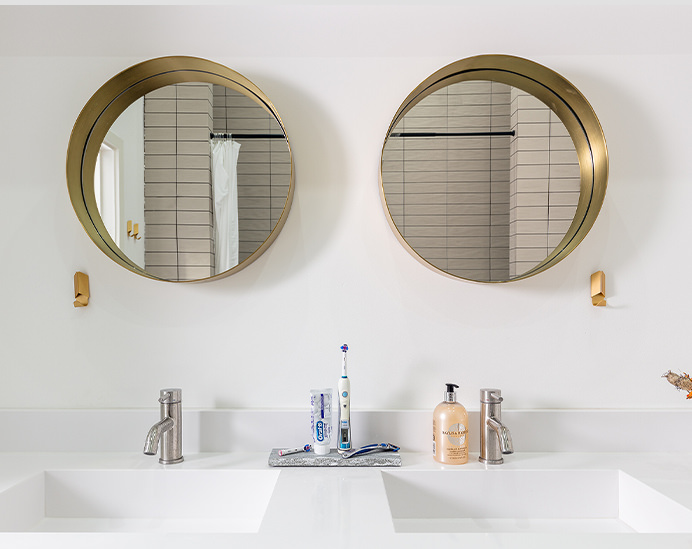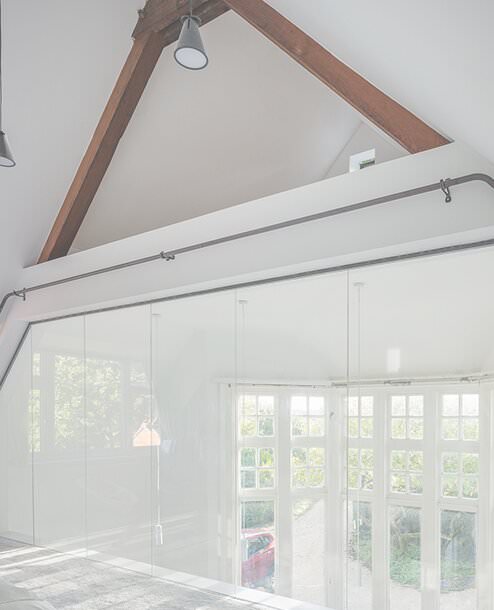4 Design Tips for Dentists
February 21, 2022
Having designed a number of dental practices, we thought we’d share 4 tips for dentists looking to set up their shiny new dental practice or for those who are looking to refresh their existing brand.
TIP 1: Don't Compromise
Great design never comes immediately, it comes iteratively - enjoy and appreciate the process of design evolution. Design evolves as we listen to your aspirations, mould a design and then reposition to suit you and the varying factors that affect the design and construction – costs being one. Along the way, we route map the design and construction by the Royal Institute of British Architect (RIBA) stages which gives you a structured approach to design and plenty of time and opportunity to pivot and redirect designs to respond to costs, planning, and technical input.
“If you don’t dream at the start, you won’t be happy at the end”
Starting off with the dream brief, design iterations will help give you clarity as we progress with regard to cost, planning, and technical restrictions. If something isn’t possible, we’ll realign the project as we go. Just don’t ever start off with a compromise!
TIP 2: Understand your Patient Journey
Who is your target market? Are you a family dental clinic? A high-end dental clinic? Your target market should be central to your concept and aesthetic as a practice. We should hone your environment to make it as comfortable as possible for your patients, that starts with understanding who they are.
“Patient comfort should be paramount”
This goes above and beyond the aesthetic of the practice but into the details also, do you need to have private consultation areas for quieter consultations? Do you need to entertain the patients through technology or play areas? Understanding this at the very start really helps us to define the practice brand and embed your identity into the practice.
TIP 3: Understanding your own spatial needs
As your designer, we’ll ask you a lot of questions to better understand your needs and wants both short-term and long-term.
“Design is a long term investment, get it right and you’ll reap the rewards for decades to come”
But we do need you to understand the specifics of what you require, for example:
a) How many surgeries do you need?
b) How do your staff work? Do you have an office manager? Do they need an office?
c) Do you need a separate admin office?
d) How many staff do you have at one time in the practice?
e) How many patients do you have in the waiting room at one point?
f) What type of treatments do you offer and do they require any bespoke spatial requirements?
The above questions are a small collection of questions we’d be interested in finding out, but we always need to understand your long-term goals to help craft the right space for you. The more specific you are, the easier it is for us to get the design right for you.
TIP 4: Get the right design team
We have a great belief that a good design team should save you money in the long run. The reality is that a design team can cost around 20% of your construction budget. That leaves 80% of the construction budget left over to make clever and planned savings. If you get a design done for a few hundred (which we’ve heard is possible), the reality is your design is done within a matter of days (rather than weeks or months) and this has several serious repercussions that’ll surprise you along the way.
Has my design been optimized and explored iteratively?
As mentioned before, good design comes after listening, exploring, and repositioning to minimize your risk and get the best possible design for you. The reason for this is to limit your risk (which we’ll come onto in a moment) but also to optimize the best design for you, your brand, and your patients.
Design is a broad term and can define how your practice feels and looks, to how well the design has been documented. Design tendering documentation is so important in the process as it will mean giving the building contractors clarity in pricing. Miss anything out, the building contractors will hit you with additional prices later on in the process after contracts are signed, meaning you’re at risk of receiving far higher prices for unplanned items as by this stage, the building contractor is already onboard and not pricing competitively anymore.
Has my risk been minimized?
Construction is a risky business – planning and cost risk are the main ones you’ll need to consider when selecting a design team.
Planning risk
Is your design considered with planning? At Vita, we ensure our plans are checked with the planning department prior to submission to maximize your chances of planning approval. If you don’t do this and get refused planning, there is no benefit to you.
Cost risk
We also explore our designs from a cost perspective, either using our own in-house pricing software or going to work with quantity surveyors to ensure costs are checked as your design progresses. That way by the time we get to tender we know you can afford what we’ve designed. If you don’t do this, there’s no point in having a design done for a project that is over budget and never going to get built.






